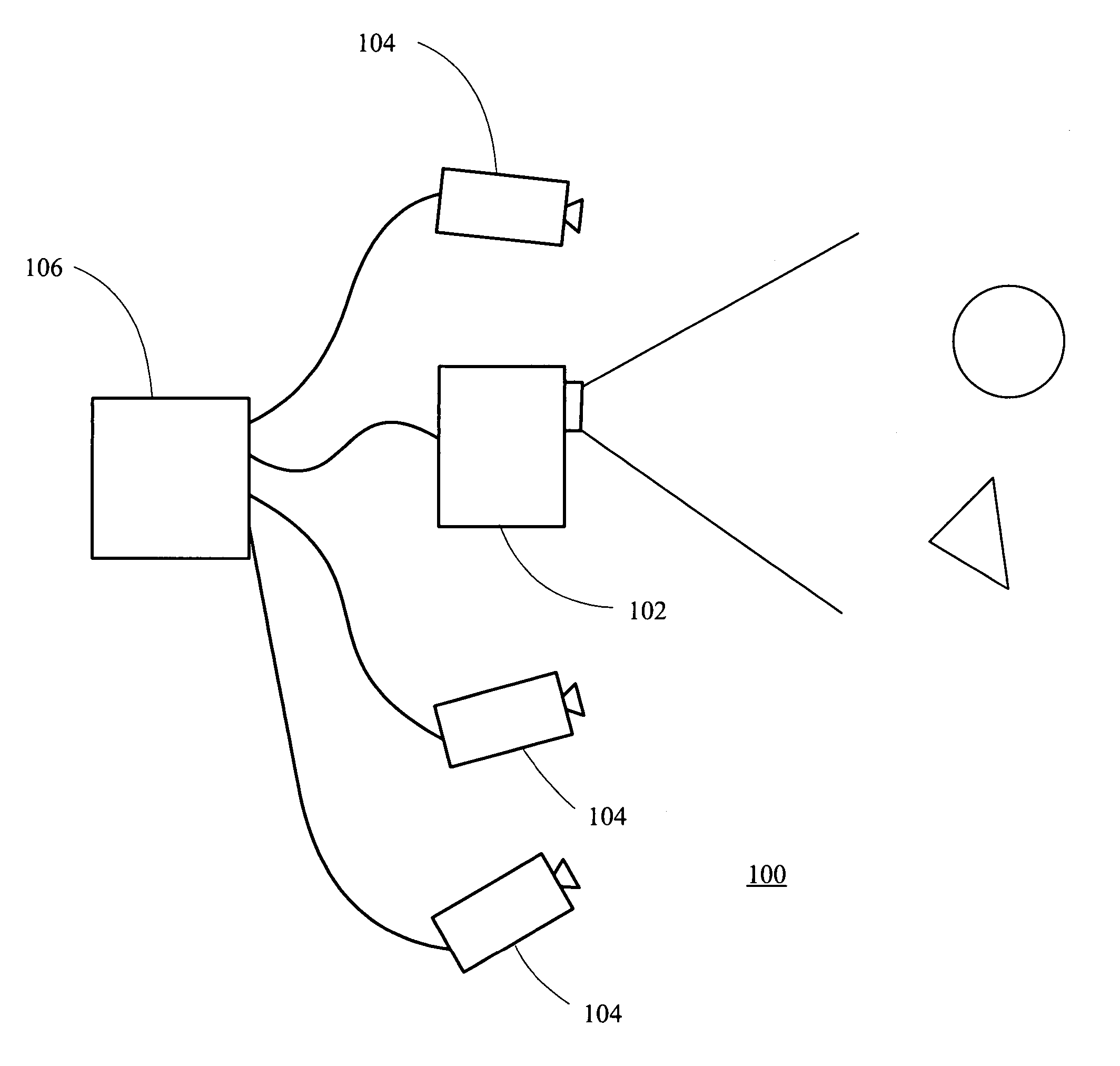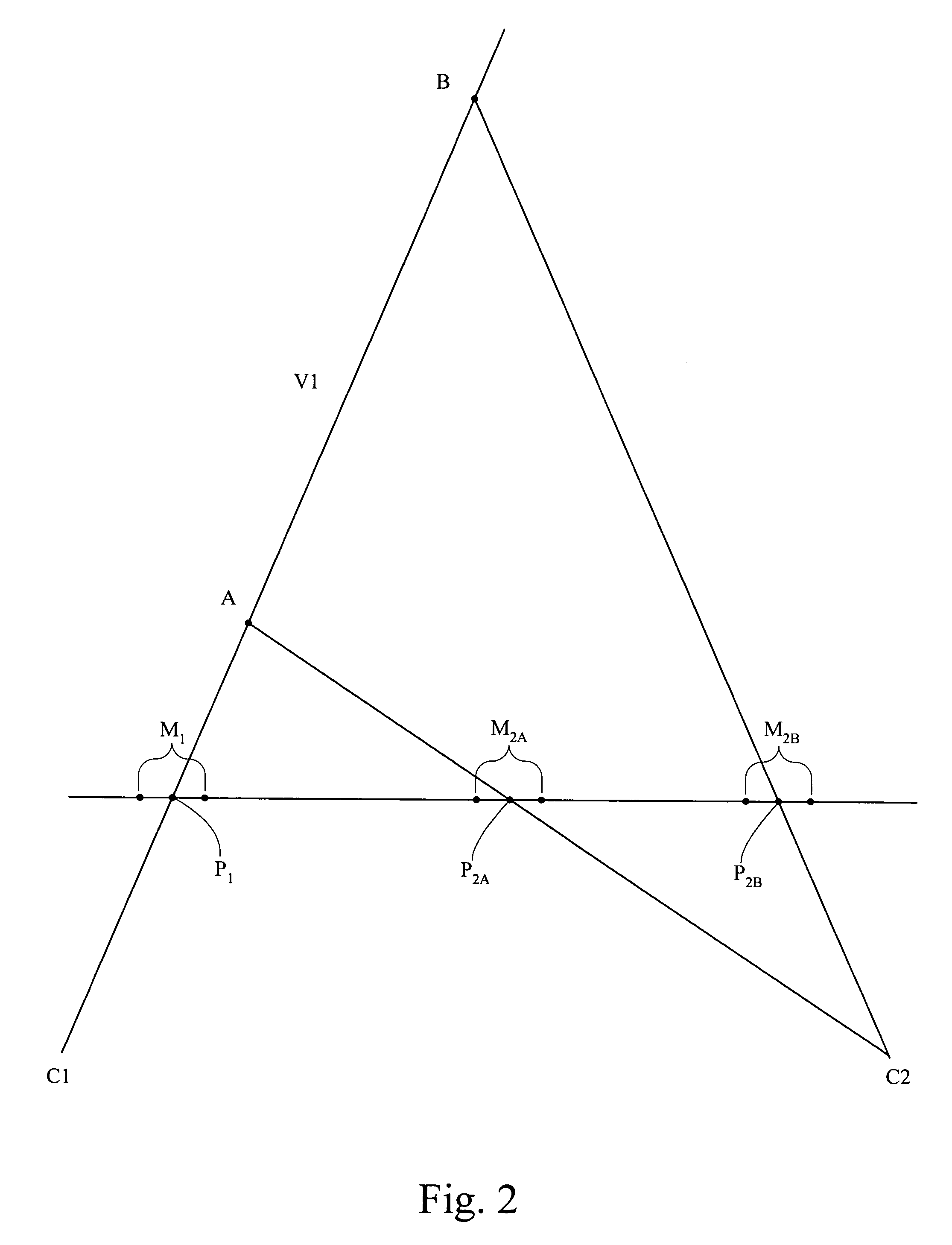Acquisition of three-dimensional images by an active stereo technique using locally unique patterns
a three-dimensional image and stereo technique technology, applied in the field of system and method for acquiring three-dimensional images, can solve problems such as differences in image matching windows, and achieve the effect of reducing range shadows
- Summary
- Abstract
- Description
- Claims
- Application Information
AI Technical Summary
Benefits of technology
Problems solved by technology
Method used
Image
Examples
Embodiment Construction
[0022]In order to create 3-D images, intensity images of a scene illuminated with projected patterns are acquired by two or more sensing devices each having a unique viewing position. A matching process is performed on the images, and the resulting matched pixels are used to determine range to points in the scene. The projected patterns are designed to enhance the fidelity of the matching process. More specifically, the invention makes use of projection patterns that are locally unique. For the purposes of describing the invention, a pattern is taken to be some spatially organized group of pattern values. A pattern window is a portion of a pattern. A locally unique pattern (LUP) is a pattern wherein every pattern window of some minimum fixed size and / or shape appears only once within some specified neighborhood of fixed size and / or shape of the overall pattern. The specific choice of LUP used by the invention depends on the imaging circumstances, the geometric and dynamic properties...
PUM
 Login to View More
Login to View More Abstract
Description
Claims
Application Information
 Login to View More
Login to View More - R&D
- Intellectual Property
- Life Sciences
- Materials
- Tech Scout
- Unparalleled Data Quality
- Higher Quality Content
- 60% Fewer Hallucinations
Browse by: Latest US Patents, China's latest patents, Technical Efficacy Thesaurus, Application Domain, Technology Topic, Popular Technical Reports.
© 2025 PatSnap. All rights reserved.Legal|Privacy policy|Modern Slavery Act Transparency Statement|Sitemap|About US| Contact US: help@patsnap.com



